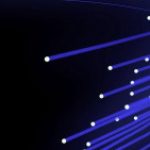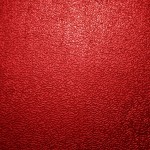- This topic has 18 replies, 6 voices, and was last updated 8 years, 6 months ago by
 Dat Tran.
Dat Tran.
-
AuthorPosts
-
-
November 7, 2015 at 12:03 pm #27512
 Dr. Dhiman KakatiParticipant
Dr. Dhiman KakatiParticipantHi all,
We all are familiar to the BER analyzer, but I am confused about the units of eye height.Regards
-
November 7, 2015 at 12:07 pm #27513
Abdallah Ismail
ParticipantThe eye diagram is two pulses plotted one up and one down inverted. To appear like the eye.
So it is a unit of pulse amplitude. -
November 7, 2015 at 12:15 pm #27514
 Dr. Dhiman KakatiParticipant
Dr. Dhiman KakatiParticipantHi abdallah, I am not clear “So it is a unit of pulse amplitude.”
Regards
-
November 7, 2015 at 2:42 pm #27515
 alistuParticipant
alistuParticipantHi Dhiman,
I believe Abdallah means since the plotted figures are two pulses, the measurement unit is also their unit, which is “pulse amplitude” unit. You might have noticed the label “Amplitude (a.u)” for the amplitude axis. Here a.u. stands for Amplitude unit, as Abdallah mentioned.
Regards
-
-
November 7, 2015 at 10:51 pm #27517
 Dr. Dhiman KakatiParticipant
Dr. Dhiman KakatiParticipantOh thank you Alistu for making me clear. will it be volt..? or other
Regards
-
November 8, 2015 at 2:27 am #27521
 alistuParticipant
alistuParticipantYou’re welcome Dhiman. In my opinion, he fact that the amplitude unit has not been named there means we can not say it is either voltage or some other parameter for sure. And I have noticed in some other forum topic discussion that it CAN be considered as voltage, but it is not necessarily that.
Regards
-
-
November 8, 2015 at 6:05 am #27535
 Dr. Dhiman KakatiParticipant
Dr. Dhiman KakatiParticipantThank you Alistu for sharing your knowledge.
Regards
-
November 9, 2015 at 4:19 am #27566
 JamalParticipant
JamalParticipantCan anyone explain the metrics , ‘Threshold’ ‘BER Pattern’ and ‘Height’ in BER analyzer ?
Regards-
November 9, 2015 at 5:59 am #27571
 alistuParticipant
alistuParticipantHi Jamal,
Threshold is a value based on whose value the binary signal logical value is being decided. If the value of the signal is less than threshold, it is considered a ‘0’ and otherwise, a ‘1’. BER pattern refers to the BER figure versus bit period time. And “Height” refers to the eye opening in the eye pattern, which shows the quality of the signal.
Regards
-
November 9, 2015 at 7:11 am #27575
 JamalParticipant
JamalParticipantThank you Alistu 🙂
Also can you tell what are the optimum values for these metrics ? -
November 9, 2015 at 9:24 am #27580
 alistuParticipant
alistuParticipantYou’re welcome Jamal. One can’t really say eye opening or BER have an optimum value. The more the eye opening, the less the error and therefore, the better system performance achieved. The minimum acceptable Q-factor for the systems is usually 6 or 9, which correspond to BER=10e-9 and BER=10e-12.
Regards
-
-
-
November 10, 2015 at 12:39 am #27591
 JamalParticipant
JamalParticipantThank you Alistu
-
November 10, 2015 at 1:08 am #27592
 JamalParticipant
JamalParticipantAlistu, how is BER related to Q factor mathematically ?
-
November 10, 2015 at 1:32 am #27593
 alistuParticipant
alistuParticipantYou’re welcome. You can refer to the following pdf file that is attached in the post in the forums topic I am addressing below. Both these parameters correspond to the eye opening and you can see where Q-factor increases, BER decreases in the BER analyzer figures.
Regards
-
-
November 11, 2015 at 7:48 pm #27651
san lymit
ParticipantDear everyone,
Could anyone tell me how to increase Q-factor and minimum BER? For example, we need to increase power at the transmitter, put the amplifier at the transmitter and transmission line?
Best regards,
-
November 11, 2015 at 10:28 pm #27654
 Dr. Dhiman KakatiParticipant
Dr. Dhiman KakatiParticipantDear San,
the BER will be minimum and Q-factor will increase only when your system design will be efficient one i.e. you have to adjust the parameters of the components, use some advanced modulation scheme such as DQPSK or QAM at the transmitter side and also go for OFDM which is found to be more immune to error. Regarding the fiber channel you can use optical amplifier such as EDFA to compensate for signal attenuation, then you can go for dispersion compensation i.e. you can use use dispersion compensation fiber for reducing the dispersion that will help you to increase the Bot rate of the system. At the receiver side DSP block you can use which is consist of many filters or algorithm such as DC blocking, Normalization, Low Pass Filter, Resampling, QI Compensation, Dispersion Compensation, Nonlinear Compensation, Timing Recovery, Adaptive Equalizer, Frequency Offset Estimation etc. that will help you to get a better result in terms of BER and Q-factor. Moreover it will be design specific such as which detection scheme you are using (homodyne or heterodyne).Regards
-
November 12, 2015 at 4:09 am #27670
 alistuParticipant
alistuParticipantHi San,
Aside from the above suggestions, you can also change the lasers linewidths in many cases to a value much less than the default value. And you should be careful with increasing the launched power, as in high powers the nonlinearities might step in. And try to use amplifier gains proportional to your channel attenuation, since amplifiers have noise figure which results in signal degradation instead of better performance in case of excessive use.
Regards
-
January 8, 2016 at 4:42 am #29067
-
-
AuthorPosts
- You must be logged in to reply to this topic.

